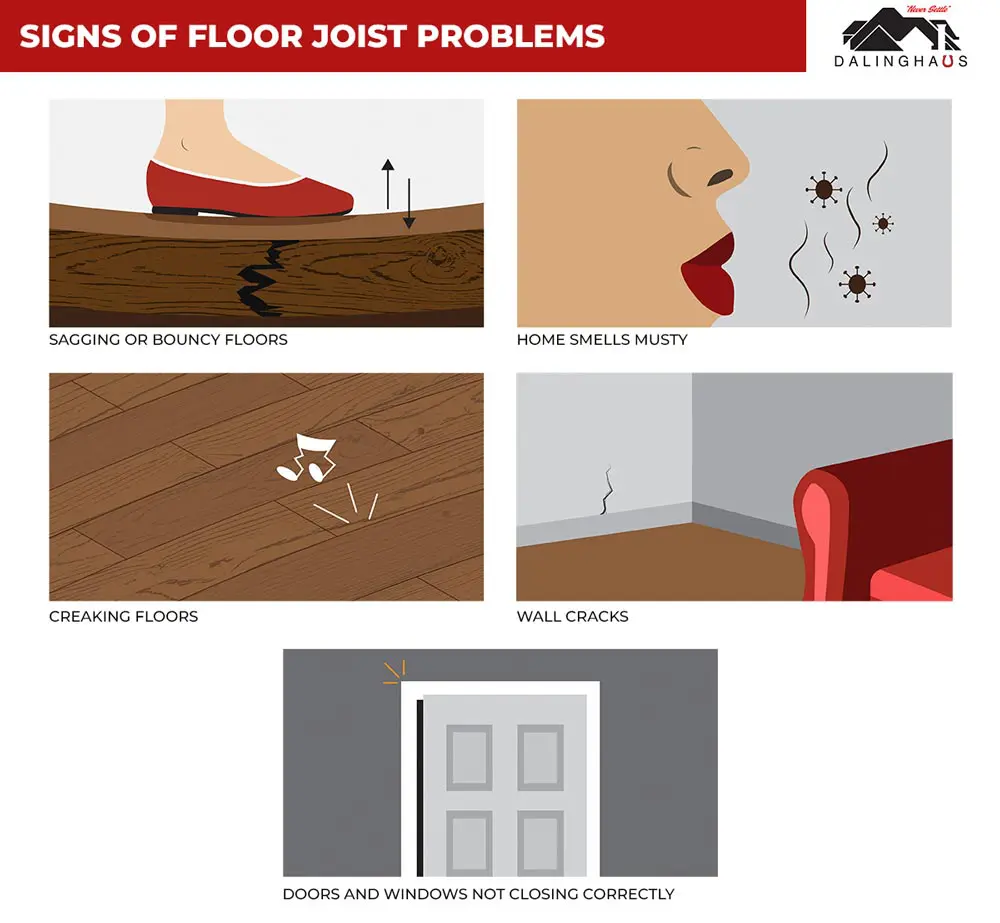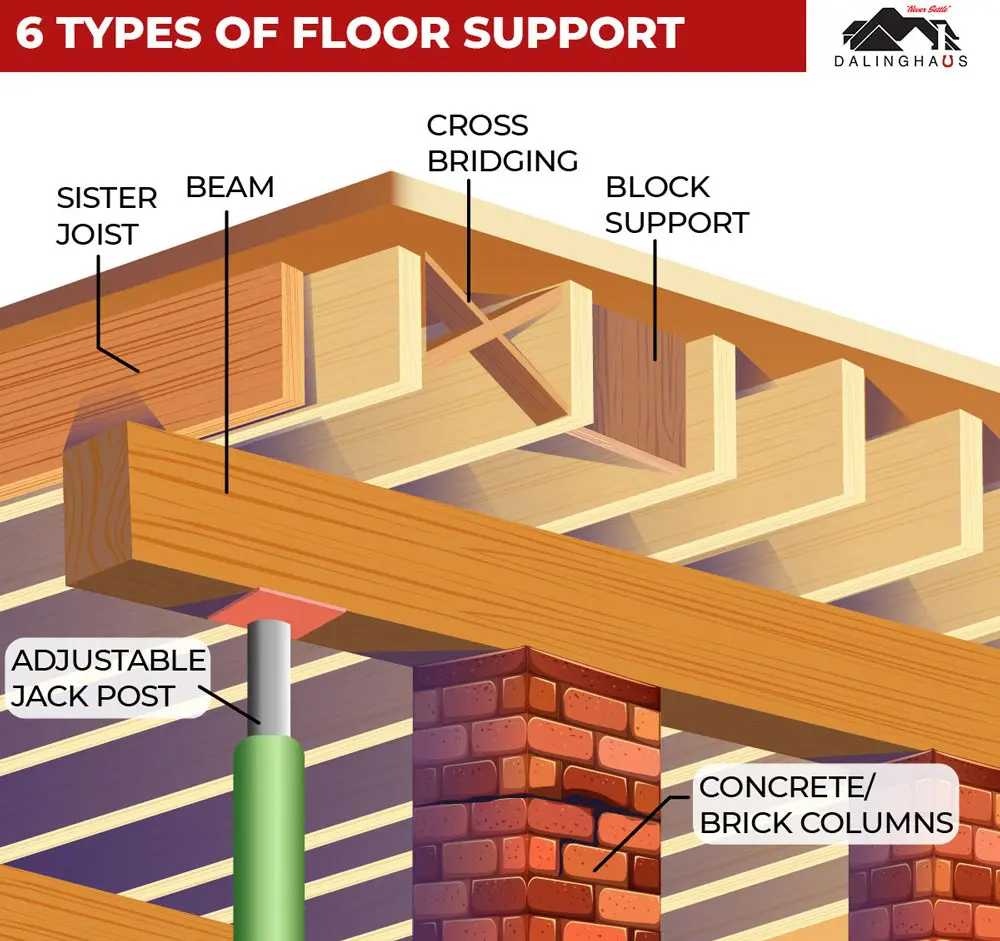Looking for information about how to strengthen floor joists from beneath? If so, don’t hit that back button because you’ve landed on the right page. In this article, we’re going to review the causes of sagging, bouncy floors, signs there might be a problem with your floor joists, how to strengthen floor joists from beneath, and more.
What Causes a Sagging or Bouncy Floor?
Various things, including the following, can cause a sagging or bouncy floor:
- Cracked joists – Cracked joists can lead to instability and a general weakening of the flooring structure.
- Poor construction – There might be an insufficient number of joists holding up the floor or too small joists. Inadequate support can also happen from using subpar materials or due to a renovation gone wrong.
- Wood rot or termite damage – Wet wood is particularly vulnerable to rot, which can cause it to lose its strength and become less stable. Similarly, termites can devour the wood, creating tunnels and compromising the floor’s structural integrity.
- There’s a problem with the beams – An issue with the beams supporting the joists can also be a culprit behind sagging or bouncy floors. This might be because the beams have shifted because of settled support posts, or they suffer from wood rot, termite damage, or some other problem.
- The joists have notches in them – Cutting notches into joists so things like electrical wiring can pass through can also be a problem because it weakens the joists and makes them less capable of supporting the floor.
Signs There Might Be a Problem With Your Floor Joists
Signs there might be a problem with your home’s floor joists include the following:
- Your floor is sagging or bouncy – This could be a sign the joists have weakened. Your furniture might even shake when you walk by.
- Your home smells musty – If you smell mold or mildew, this could indicate moisture damage in your floor joists. Mold can not only weaken the structural integrity of your floor joists, but it can also cause respiratory problems for the home’s residents.
- Your floors creak – While some noise is normal in older homes, if you notice an increase in sounds or they’re exceptionally loud, it could indicate your floor joists are under stress.
- Wall cracks – As the floor joists shift, the walls above them will also shift, causing cracks to develop. These cracks can be a sign of significant structural damage and should be inspected by a professional immediately.
- Windows and doors don’t open and close correctly – Weakened floor joists can cause windows and doors to become misaligned.

If you notice any of the above signs, contact a licensed foundation repair contractor and ask for an assessment of your floor joists. Acting fast can help prevent further damage and even more costly repairs.
Should I Be Concerned About a Bouncy Floor?
Yes, you should be concerned because a sagging or bouncy floor indicates there could be a problem with the wooden structures holding up your floor. This might be the joists, the beams, or the support posts. It’s best to contact a professional right away and ask them to have a look.

How to Strengthen Floor Joists From Beneath
Fortunately, there are several solutions for strengthening floor joists from beneath. These include the following:
- Sister the joists – “Sistering” involves attaching new lumber alongside the weakened or damaged joists. This adds strength to the original joist and can help to redistribute weight and improve overall stability.
- Install a mid-span beam or wall – Installing a mid-span beam or wall can also support the joists.
- Bridge the joists – Another option for reinforcement is to “bridge” the joists.
- Add support blocks – These blocks can be made of wood and will keep the joists straight, providing additional stability and reinforcement.
- Replace the support posts – In some cases, the issue may be with the support posts holding up the beams and the joists. If this is the case, replacing the support posts entirely or installing screw jacks to support the beams may be necessary. Screw jacks can be adjusted to provide ongoing support and can be a cost-effective solution for reinforcing weakened floor joists.
It’s important to note that reinforcing floor joists from beneath can be a complex task and should be performed by a professional if you’re not experienced with foundation repair. Seeking the guidance of a foundation repair contractor can help ensure the job is done correctly.
How Much Does It Cost to Strengthen Floor Joists From Beneath?
The cost to strengthen floor joists from beneath will depend on the extent of the damage (one or several joists?), the type of strengthening required, and your geographical location. On average, the cost can range from $2,500 to $5,000. However, if the damage is severe and additional materials or labor are required, the cost can exceed $10,000.
If you’re worried about your home’s floor joists, contact us today to schedule an evaluation. If we find a problem, we’ll give you a repair estimate. We serve Southern California, Arizona, and Nevada.






